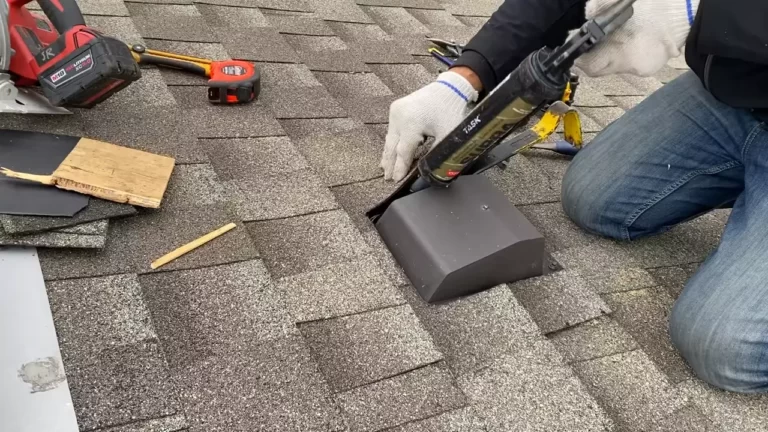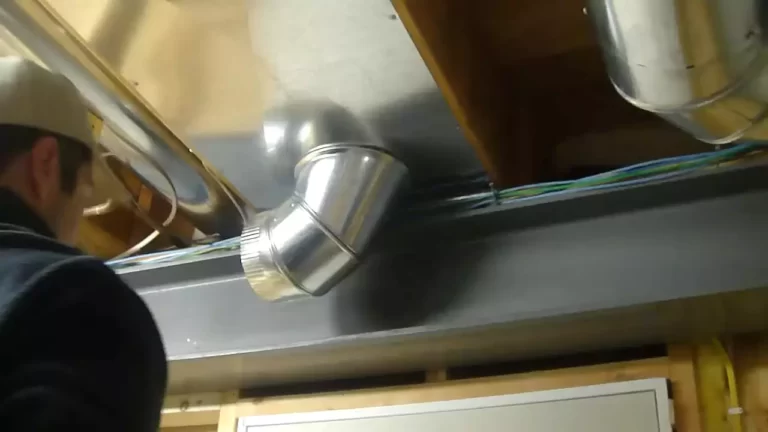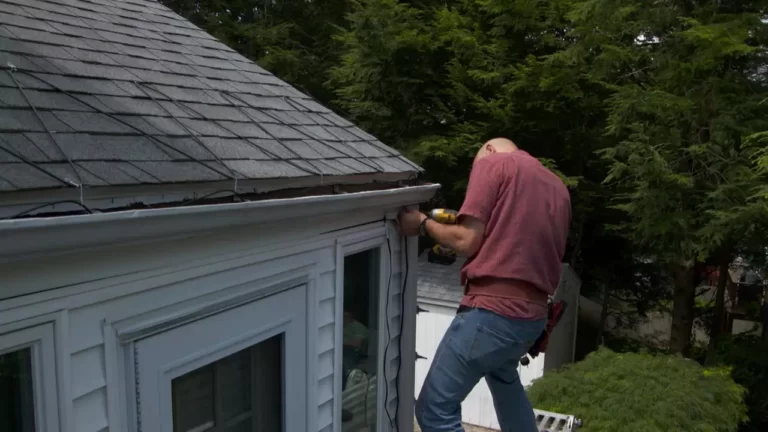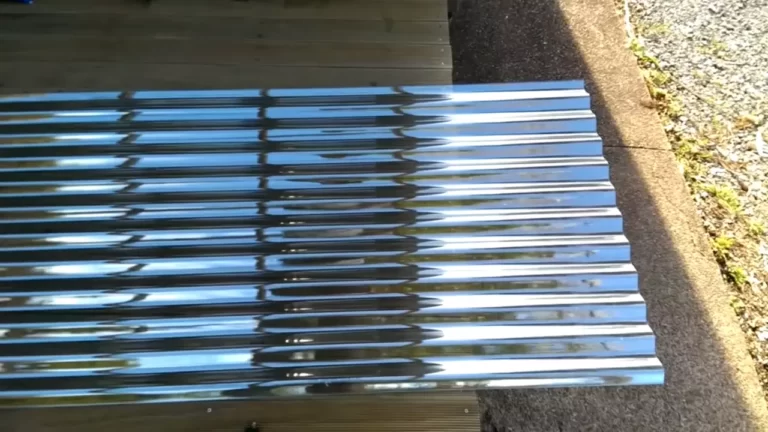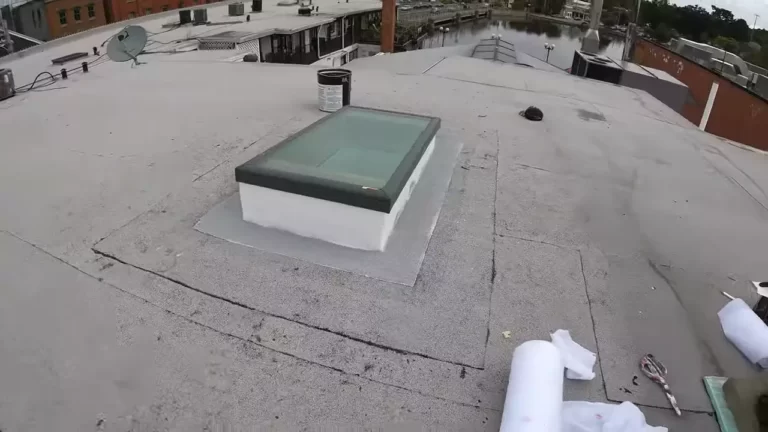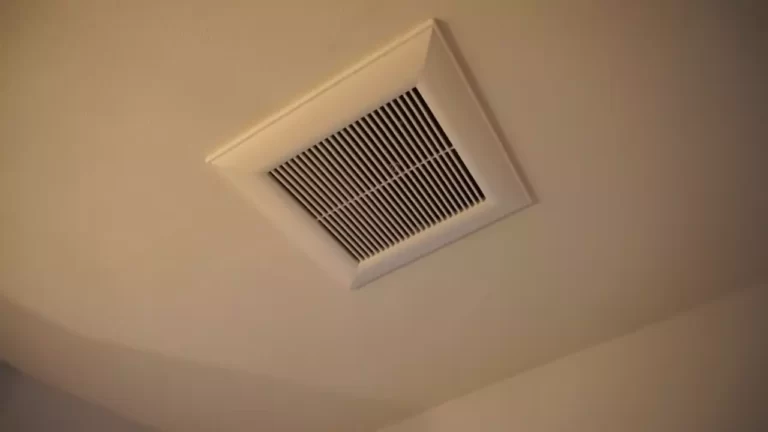How to Install a Screened in Porch?
Install a screened-in porch by following these steps: prepare the site, install the foundation, frame the porch, screen the walls, and add finishing touches. Adding a screened-in porch to your home can create a versatile and comfortable outdoor living space.
Whether you want to enjoy the fresh air without bugs, have a safe area for kids and pets to play, or simply relax and enjoy your surroundings, a screened-in porch is a great addition. With a few simple steps and some planning, you can install a screened-in porch that will enhance your home and provide years of enjoyment.
So, let’s get started!
Overview Of Screened In Porches
Screened in porches are a popular addition to many homes, providing a comfortable and inviting space to enjoy the outdoors while being protected from insects and the elements. This versatile outdoor living area can serve as a cozy retreat for relaxation, a space for entertaining guests, or a hobby room for activities such as gardening or crafting. Whether you want to enhance your home’s curb appeal or increase its market value, a screened in porch can be a valuable addition to your property.

Benefits of a Screened in Porch
When it comes to the benefits of installing a screened in porch, the list is extensive. Here are some of the key advantages:
- Protection from insects: One of the biggest advantages of a screened in porch is the protection it offers from bothersome insects. With a screen enclosure, you can enjoy the fresh outdoor air without the annoyance of bugs buzzing around.
- Increased comfort: In addition to keeping bugs at bay, screened in porches provide a comfortable and shaded space where you can relax and unwind. You can enjoy the gentle breeze, listen to the sounds of nature, and feel the tranquility of the outdoors while staying protected from direct sunlight.
- Expanded living space: A screened in porch effectively extends your living space, giving you an outdoor area to use year-round. Whether you want to enjoy your morning coffee in peace, host a dinner party, or simply have a place to watch the sunset, a screened in porch offers a versatile and functional space for various activities.
- Added value to your home: A well-designed and professionally installed screened in porch can significantly increase the value of your home. Potential buyers are often attracted to the idea of having an additional outdoor living space that provides both comfort and functionality.
Factors to Consider Before Installation
Before diving into the installation process, it’s important to consider a few factors to ensure that your screened in porch meets your specific needs and preferences:
- Size and layout: Determine the size and layout of your screened in porch based on the available space and your intended use. Consider factors such as the number of people who will be using the space, furniture placement, and any additional features you may want to incorporate, such as a ceiling fan or lighting.
- Materials: Choose the appropriate materials for your screened in porch based on the climate of your area and the aesthetic you desire. Common materials include aluminum, vinyl, and wood. Each material has its own advantages and considerations, so it’s essential to do your research and select the one that best suits your needs.
- Building regulations and permits: Check with your local authorities to determine if there are any building regulations or permits required for installing a screened in porch. Compliance with local regulations ensures that your porch is safe and meets the necessary standards.
- Budget: Establish a budget for your screened in porch project and consider factors such as material costs, labor fees, and any additional features you want to include. It’s important to strike a balance between your desired design and the amount you are willing to invest.
By carefully considering these factors and planning your screened in porch installation, you can create a space that enhances your home’s functionality, aesthetics, and overall value.
Planning And Preparation
Before starting the installation process for a screened-in porch, it’s crucial to invest time and effort in careful planning and preparation. This stage will not only ensure a successful installation but also save you from any potential problems that may arise during the project. In this section, we will discuss three important aspects of planning and preparation for your screened-in porch installation: measuring the porch area, selecting the right materials, and getting the necessary permits.
Measuring the Porch Area
Accurate measurements are the foundation of any successful home improvement project, and installing a screened-in porch is no exception. To properly measure your porch area, follow these steps:
- Start by measuring the length and width of the porch. Take precise measurements from the inside edge of each wall, ensuring you account for any obstructions or irregularities.
- Consider the desired height of the porch. Measure from the floor to the desired height and make sure to leave enough clearance for comfortable use.
- Take note of any architectural features or existing structures that need to be incorporated into your design. This could include columns, doorways, or windows that may affect the layout of the screened-in porch.
By following these steps, you will have accurate measurements that will help you design and plan your screened-in porch effectively. Keep the measurements handy throughout the planning and installation process.
Selecting the Right Materials
The materials you choose for your screened-in porch will greatly impact its durability, appearance, and maintenance requirements. Consider the following factors when selecting your materials:
- Screening: Choose a high-quality screening material that is resistant to tears and provides optimum visibility. Options include fiberglass, aluminum, and polyester screens.
- Frame Material: Common choices for porch frames include aluminum, wood, or vinyl. Each material has its own advantages and considerations, such as durability, maintenance, and cost.
- Roofing: Decide whether you want a solid roof or a more open design. Options range from traditional shingles to translucent polycarbonate panels.
- Flooring: Consider the material that suits your porch’s style and functional requirements. Popular options include wood, composite decking, or porcelain tiles.
By selecting the right materials for your screened-in porch, you can ensure a long-lasting and visually appealing addition to your home.

Getting the Necessary Permits
Before starting any construction project, it’s essential to check with your local authorities about necessary permits and regulations. While the requirements may vary depending on your location, most screened-in porch installations will require permits to ensure compliance with building codes and safety standards. Follow these steps:
- Contact your local building department to determine the specific permits needed for your screened-in porch project.
- Provide all required documentation, including your porch design, material specifications, and project details.
- Pay any applicable permit fees.
- Wait for the permit approval before starting any construction work.
Obtaining the necessary permits is crucial for legality and safety. It also gives you peace of mind, knowing that your screened-in porch installation is compliant with local regulations.
By considering these three aspects—measuring the porch area, selecting the right materials, and getting the necessary permits—you will be well-prepared to begin your screened-in porch installation project. Taking the time to plan and prepare properly will ultimately result in a functional and beautiful addition to your home.
Step-By-Step Installation Process
Installing a screened in porch can be a great way to expand your outdoor living space while keeping out bugs and debris. If you’re ready to tackle this project on your own, follow this step-by-step installation process to get started.
Clearing and preparing the porch area
Before you begin building your screened in porch, it’s important to clear and prepare the porch area. Here are the steps to follow:
- Remove any existing furniture or items from the porch area.
- Sweep the porch thoroughly to remove dirt, leaves, and debris.
- If necessary, use a power washer to clean the porch surface.
Building the porch frame
The next step in the installation process is to build a sturdy frame for your screened in porch. Follow these steps to ensure a solid foundation:
- Measure the dimensions of your porch area and mark the locations for the two vertical support posts at each corner.
- Dig holes for the support posts using a post hole digger, ensuring they are deep enough to provide stability.
- Place the support posts in the holes and backfill with concrete, ensuring they are level and plumb.
- Attach a ledger board to the exterior wall of your house, ensuring it is level and securely fastened.
- Install joist hangers onto the ledger board and attach the joists, ensuring they are evenly spaced and level.
- Secure the joists to the support posts using metal brackets or hardware.
Installing the screen walls
Once the porch frame is complete, it’s time to install the screen walls. Follow these steps to ensure a proper installation:
- Measure and cut the screen material to fit each section of the porch walls, leaving some excess for attaching to the frame.
- Attach the screen material to the frame using a staple gun, starting at one corner and working your way around.
- Ensure the screen material is taut and free from any wrinkles or sagging.
- Trim off any excess screen material using sharp scissors or a utility knife.
- Install screen doors at the entrance of the porch, ensuring they are securely attached and easy to open and close.
By following these step-by-step instructions, you’ll be well on your way to installing a beautiful and functional screened in porch. Enjoy your new outdoor space!
Choosing The Right Screen Material
When it comes to creating an inviting and functional screened-in porch, choosing the right screen material is crucial. The screen material you select will determine not only the look and feel of your porch but also its durability and performance. With a wide variety of options available, it is essential to understand the different types of screen materials and the factors to consider when making your choice.
Types of Available Screen Materials:
When it comes to screen materials, there is no shortage of options to choose from. Here are some of the most common types:
| Type | Description |
|---|---|
| Fiberglass | One of the most popular choices, fiberglass screens are known for their durability and affordability. They offer good visibility and a high level of insect resistance. |
| Aluminum | Aluminum screens are lightweight, strong, and resistant to corrosion. They are an excellent choice for areas with high moisture levels. |
| Pet-Resistant | If you have pets, a pet-resistant screen material is a wise investment. These screens are designed to withstand scratching and other damage caused by pets. |

Factors to Consider When Choosing:
Before making a decision, there are several crucial factors you should consider:
- Budget: Determine your budget and choose a screen material that fits within your financial constraints.
- Climate: Consider the climate in your area. If you experience extreme weather conditions, you will need a screen material that can withstand them.
- Visibility: Think about how important visibility is to you. Some screen materials offer better visibility than others.
- Insect Resistance: If insects are a concern in your area, prioritize screen materials that offer a high level of insect resistance.
- Pet-Friendly: If you have pets, opt for a pet-resistant screen material to ensure its longevity.
- Maintenance: Consider the maintenance requirements of each screen material. Some may require regular cleaning or maintenance to stay in good condition.
By carefully considering these factors and weighing the pros and cons of each screen material, you will be able to choose the one that best meets your needs and preferences. Remember, the right screen material will not only enhance the appearance of your porch but also provide you with years of enjoyment and comfort.
Screening Options
When it comes to installing a screened-in porch, choosing the right screening option is crucial. The type of screening you select will impact the overall appearance, functionality, and maintenance of your porch. Two popular choices for screened-in porches are fixed screens and retractable screens.
Fixed screens vs. retractable screens
Fixed screens are a traditional option for screened-in porches. These screens are permanently attached to the porch frame, providing a secure barrier against insects and debris. On the other hand, retractable screens are a more modern and versatile choice. These screens can be pulled out or rolled up depending on your needs, allowing you to easily transition between an open-air space and a screened enclosure.
Pros and cons of each option
Fixed screens
Pros:
- Provide a permanent and secure barrier against insects
- Can be more affordable than retractable screens
- Require minimal maintenance once installed
Cons:
- Cannot be easily removed or adjusted
- May obstruct views when compared to retractable screens
- May require professional installation
Retractable screens
Pros:
- Flexible and customizable, allowing you to adapt your porch to different weather conditions
- Provide unobstructed views when retracted
- Easy to operate and adjust
Cons:
- Can be more expensive than fixed screens
- Require regular maintenance to ensure smooth operation
- May need to be replaced or repaired over time
Ultimately, the choice between fixed screens and retractable screens depends on your personal preferences, budget, and lifestyle. Consider factors such as the climate in your area, the level of maintenance you are willing to undertake, and the desired aesthetics of your porch. By selecting the right screening option, you can create a functional and beautiful outdoor space that enhances your enjoyment of your home.
Installing The Screen Doors
When it comes to creating a comfortable and bug-free outdoor space, installing screen doors for your porch is essential. Screen doors not only allow fresh air to flow through, but they also keep out pesky insects and provide an added layer of security. In this section, we will explore the different types of screen doors available and outline the steps to install them effectively.
Types of Screen Doors
Before installing a screen door, it’s important to consider the different types available to find one that suits your needs. Here are a few popular options:
| Type | Description |
|---|---|
| Swinging Screen Doors | These doors swing open and close using hinges and are a classic choice for screened porches. They are available in various materials such as wood, aluminum, and vinyl. |
| Sliding Screen Doors | Sliding doors are ideal if you have limited space on your porch. They operate on a track system, allowing them to smoothly slide open and closed. |
| Retractable Screen Doors | If you prefer a screen door that can be easily hidden when not in use, consider a retractable screen door. These doors roll up and disappear into a cassette when not in use, offering an unobstructed view. |
Whichever type of screen door you choose, ensure that it aligns with the size and style of your porch.

Steps to Install a Screen Door
Now that you’ve selected the perfect screen door, it’s time to install it. Follow these steps to ensure a successful installation:
- Gather the necessary tools: Before you start, make sure you have all the tools you’ll need, such as a tape measure, screwdriver, drill, screws, and a level.
- Measure and mark: Measure the dimensions of your doorway and mark the areas where the hinges and latch will be placed.
- Prep the door and frame: If your screen door comes pre-assembled, skip this step. If not, follow the manufacturer’s instructions to assemble the door and attach any necessary hardware.
- Mount the hinges: Attach the hinges to the door jamb using the provided screws. Ensure they are aligned properly and securely fastened.
- Hang the door: With the help of a friend or family member, position the door in the doorway and attach the hinges to the doorframe. Use a level to ensure the door is straight and plumb.
- Install the latch and handle: Attach the latch and handle according to the manufacturer’s instructions. Test the door to ensure it closes and latches correctly.
- Adjust and secure: Make any necessary adjustments to ensure the door operates smoothly. Secure all screws and hardware to ensure the door is stable.
Congratulations! You have successfully installed a screen door for your porch. Enjoy the fresh air and bug-free environment that your screened-in porch now provides.
Electrical Considerations
When it comes to installing a screened-in porch, one important aspect that often gets overlooked is the electrical considerations. Adding electrical outlets and lighting to your screened-in porch can greatly enhance its functionality and comfort. Whether you are looking to create the perfect ambiance with outdoor lighting or simply need convenient access to power for appliances and devices, proper electrical planning is essential.
Adding electrical outlets and lighting
When installing a screened-in porch, it is crucial to determine the locations for your electrical outlets and lighting fixtures. This will depend on the intended use of your porch and the layout of your space. Consider where you will need power outlets for charging devices, using appliances, or operating fans. Additionally, think about how you want to illuminate your porch. Will you be installing recessed lights, wall sconces, or perhaps string lights for a cozy atmosphere?
Creating an electrical plan will help you ensure that you have sufficient outlets and lighting in the right places. If you are unsure about the best layout or electrical requirements, consulting with an electrician is recommended.
Hiring an electrician or DIY options
When it comes to the electrical installation of your screened-in porch, you have two options: hiring a professional electrician or doing it yourself. Both options have their pros and cons, and it ultimately depends on your skill level and comfort with electrical work.
If you are not experienced with electrical work or unsure about local electrical codes and regulations, it is advisable to hire a licensed electrician. They will have the expertise to ensure that the electrical installation is safe and up to code. An electrician can also help you with the electrical planning and advise you on the best options for your specific needs.
However, if you have the necessary knowledge and skills, you may choose to tackle the electrical installation as a DIY project. This can save you money, but it is essential to familiarize yourself with the electrical codes and safety precautions. Always work with caution and follow the necessary steps, such as turning off the power before making any electrical connections.
Remember, safety should always be the priority when working with electricity. If you are uncertain or uncomfortable with any aspect of the electrical installation, it is best to consult with a professional. They can ensure that your screened-in porch is both functional and safe for you and your family to enjoy.
Flooring Options For Screened In Porches
One of the most important decisions you will make when installing a screened-in porch is choosing the right flooring. The flooring you choose will not only impact the overall look and feel of your porch, but it will also affect its durability and maintenance. With so many options available, it can be overwhelming to decide which one is best for your needs. In this article, we will explore the different types of flooring suitable for screened porches and the factors you should consider when making your decision.
Types of flooring suitable for screened porches
When it comes to flooring options for screened porches, there are several materials that can withstand the elements while providing a comfortable and stylish surface. Let’s take a look at some of the most popular choices:
| Flooring Material | Pros | Cons |
|---|---|---|
| Concrete |
|
|
| Decking |
|
|
| Tile |
|
|
Factors to consider when choosing
Choosing the right flooring for your screened porch involves more than just aesthetics. It’s important to consider the following factors:
- Climate: Consider the climate in your area. If you experience extreme temperatures or high humidity, you may want to choose a flooring material that can withstand these conditions.
- Maintenance: Think about the level of maintenance you are willing to commit to. Some materials, such as decking, require regular upkeep, while others, like concrete, are low maintenance.
- Comfort: Consider how you will use your screened porch. If you plan to spend a lot of time barefoot or lounging on furniture, you may want to choose a softer flooring material, such as carpet or area rugs.
- Budget: Set a budget for your flooring project and consider the cost of both materials and installation. Keep in mind that certain materials, like natural stone, may be more expensive upfront but offer long-term durability.
By considering these factors and weighing the pros and cons of different flooring materials, you can make an informed decision that suits your style, budget, and lifestyle. Remember, your screened porch is an extension of your home, so choose a flooring option that enhances its overall appeal and functionality.

Decor And Furniture Ideas
When it comes to creating the ideal atmosphere for your screened-in porch, carefully selecting the right decor and furniture is crucial. The decor and furniture you choose can transform your porch into a cozy and inviting space where you can relax and entertain. With a myriad of options available, it’s important to consider both functionality and style. In this section, we will explore various furniture options for a screened porch and share some tips for creating a cozy and inviting space.
Furniture options for a screened porch
Choosing the right type of furniture for your screened porch can make a world of difference in terms of comfort and style. Whether you’re looking for a cozy seating area or a dining space, there are several options to consider. Here are a few popular furniture choices:
- Wicker furniture: Wicker furniture has long been a popular choice for screened porches due to its durability and timeless appeal. Its natural aesthetic fits well with the outdoor setting, creating a cozy and rustic ambiance.
- Adirondack chairs: Known for their distinctive slanted backs and wide armrests, Adirondack chairs are a classic choice for a relaxed seating area. Made from wood or durable synthetic materials, these chairs offer both comfort and style.
- Outdoor sofas: If you envision your screened porch as a gathering space for family and friends, consider adding an outdoor sofa. Choose weather-resistant materials and plush cushions to create a comfortable and inviting seating area.
- Swing or hammock: For a touch of charm and whimsy, incorporate a swing or hammock into your screened porch. These options provide a unique seating experience, allowing you to sway and relax while enjoying the outdoors.
Tips for creating a cozy and inviting space
To ensure your screened porch becomes a cozy and inviting retreat, here are a few tips to keep in mind:
- Use soft lighting: Gentle lighting can create a warm and welcoming ambiance. Consider using string lights, lanterns, or even candles to add a soft glow to your porch.
- Add textiles: Incorporating soft textiles, such as throw pillows and blankets, can instantly elevate the comfort level of your porch. Choose fabrics that are weather-resistant and easy to clean.
- Create a focal point: A focal point can serve as the centerpiece of your screened porch. This can be a striking piece of furniture, a colorful rug, or even a decorative wall hanging.
- Bring in nature: Integrate elements of nature into your porch decor to create a soothing and organic atmosphere. Consider adding potted plants, hanging baskets, or even a small herb garden.
- Personalize with accessories: Add your own personal touch to the space by incorporating accessories and decor that reflect your style and interests. This could be wall art, decorative vases, or even a collection of your favorite books.
By carefully selecting the right furniture and incorporating thoughtful decor, you can transform your screened porch into a cozy and inviting space that you and your guests will love. Remember to consider both functionality and style when choosing furniture, and don’t forget to add your own personal touch to make it truly yours.
Maintenance And Upkeep
Maintaining and caring for your screened-in porch is essential to ensure its longevity and keep it looking beautiful throughout the years. Regular maintenance not only prolongs the life of your porch but also enhances your overall enjoyment of the space. Here are some crucial aspects of maintenance and upkeep to consider:
Cleaning and maintaining the screens
Your screened-in porch’s screens are the frontline defense against pesky insects and debris. Keeping them clean and well-maintained will not only enhance the aesthetics of your porch but also ensure proper functionality.
Cleaning tips:
- Start by removing loose debris, such as leaves and spider webs, with a soft-bristle broom or a vacuum cleaner.
- For more stubborn dirt or grime, use a mild detergent mixed with water and a soft brush.
- Rinse the screens thoroughly with water to remove any soap residue.
- Allow the screens to air dry before reinstalling them.
Maintenance tips:
- Regularly inspect the screens for any tears or holes and promptly repair or replace damaged sections.
- Tighten any loose fasteners or screws that may affect the stability of the screens.
Protecting the porch from weather elements
The weather can be harsh on your screened-in porch, causing damage and deterioration if not properly protected. Taking measures to shield your porch from the elements will not only extend its lifespan but also save you from unnecessary repairs and costs in the future.
Weather protection tips:
- Apply a high-quality waterproof sealant to the porch floor to protect it from moisture penetration.
- Install weather-stripping around doors and windows to prevent drafts and water leaks.
- Consider adding storm windows to provide an extra layer of protection during severe weather conditions.
Regular inspections:
- Schedule regular inspections of your porch to identify any signs of damage, such as rot or decay, and address them promptly.
- Check the roof of your porch for any leaks or areas that may require resealing.
- Trim nearby trees and bushes to prevent branches from damaging the porch during storms.
By following these maintenance and upkeep practices, you can keep your screened-in porch in excellent condition for many years to come. Remember, proper care and attention will not only protect your investment but also provide a comfortable and enjoyable outdoor space for relaxation and entertaining.
Frequently Asked Questions For How To Install A Screened In Porch
What Is A Screened-In Porch And Why Should I Install One?
A screened-in porch is a covered outdoor space enclosed with screens, allowing you to enjoy the outdoors without pesky bugs. Installing one adds value to your home, provides extra living space, and offers a perfect spot for relaxation and entertaining.
What Are The Benefits Of Installing A Screened-In Porch?
Installing a screened-in porch offers numerous benefits. It provides protection from insects and pests, allows for ventilation and fresh air, reduces sun exposure, offers privacy, increases property value, and creates a versatile space for various activities like dining, lounging, and hosting gatherings.
How Much Does It Cost To Install A Screened-In Porch?
The cost of installing a screened-in porch varies based on factors like size, materials used, labor costs, and location. On average, you can expect to spend around $15,000 to $25,000 for a basic screened-in porch. However, larger or custom designs can cost upwards of $30,000.
What Are The Steps Involved In Installing A Screened-In Porch?
To install a screened-in porch, begin by obtaining necessary permits and planning the design. Next, prepare the area by clearing existing structures or vegetation. Build a foundation, frame the structure, and install roof trusses and supports. Finally, add screens, doors, and finishing touches to complete your screened-in porch.
Conclusion
Installing a screened-in porch offers numerous benefits for homeowners. It provides a comfortable and bug-free outdoor space, allows for year-round use, and enhances the overall value and aesthetics of a home. By following the step-by-step guide provided in this blog post, you can successfully create your own screened-in porch.
Remember to choose quality materials, take accurate measurements, and follow the necessary safety precautions. With a bit of effort and planning, you can enjoy the beauty and convenience of a screened-in porch for years to come.


